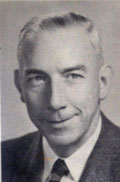
1941: Paul Mitten
Paul Mitten was a World War I veteran who came to Longview from Philadelphia in 1923. At age 26, he was hired as secretary to Mark Morris, vice president and general manager of Long-Bell. Seven years later, he became superintendent of Longview Memorial Hospital, now PeaceHealth St. John Medical Center.
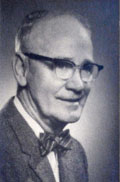
1942: H.H. “Bab” Martin
After graduating with a law degree from Louisiana’s Tulane University in 1921, H.H. “Bab” Martin arrived in Longview to work for Lumberman’s Bank and Trust. Later, he established Martin Insurance Agency. He was a charter member of the Cowlitz County Board of Realtors. In 1971, the Board of Realtors and 17 insurance agencies ran ads announcing they would be closed on Oct. 2, the day of his funeral service. He was well known as an avid baseball fan and golfer.
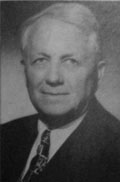
1943: Guy L. Anderson
In 1923, at age 38, Guy Anderson moved from Portland to Longview to become the traffic manager for the Longview, Portland, and Northern Railway. He had a keen interest in the Chamber of Commerce and education. In 1953, he developed homesites on the crest of Columbia Heights, naming his subdivision-Cedar Gates. Near the end of his life, he envisioned an endowment to support young people at Longview Community Church who were studying for careers in Christian ministry. Earnings from the Cedar Gates venture seeded the endowment, which continues to award scholarships.
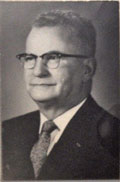
1944: R.M. “Curly” Anderson
Curly Anderson left Astoria in 1923 to join the Longview Daily News as a reporter. He later moved to the business side and retired as display advertising manager in 1961. He continued working part-time as the newspaper’s head of national advertising. For a brief period, he was Cowlitz County’s Civil Defense director. A jovial, smiling cigar smoker, he was a popular public figure committed to community service. He was especially active as a charter member of the Longview Shriners Lodge.
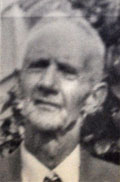
1945-46: W.D. Van Note
In January 1923, W.D. Van Note was serving as Cowlitz County coroner when the Allen Street Bridge collapsed in what remains Washington’s deadliest bridge disaster. He estimated that 35–40 people were missing, but the exact number of lives lost was never determined. For 24 years, Van Note was the timekeeper for R.A. Long High athletic events. His interest in sports also led him to do some coaching. A brief item in an early edition of the Longview Daily News reported that he was named manager of the 1925 Long-Bell basketball team. Van Note worked for Long-Bell and was a licensed embalmer.
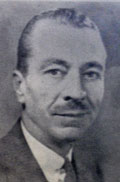
1947: C.B. Sweet
C.B. Sweet began a 30-year career with Long-Bell as a 21-year-old laborer in the company’s building supply yard. Over the years, he advanced to become the Western Division manager of the Long-Bell retail department. He left in 1953 to take a job in Fresno. Three years later, he was appointed assistant commissioner of operations for the Federal Housing Administration, where he oversaw 136 field offices.
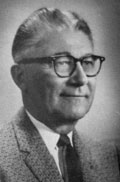
1948: Harry Martin
Harry Martin was a 28-year-old Midwest native whose curiosity about the “wonder city” being built on the Columbia River lured him to town in 1923. He and a younger brother, Tony, started Martin Transfer Co. in 1924, paying $250 down on a Ford truck. The company’s slogan was “Let Martin do your cartin’.” Harry and his bride, Ellen, began their lives together in a $7-a-month two-room shack in an area of temporary housing known as Skidville. In 1962, he built Martin’s Dock as a gift to the city.
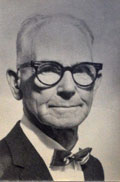
1949-51: John Hill
John Hill was known as “Mr. Bridge” during his 15 years as a toll collector and supervisor on the Longview-Rainier Bridge. He retired at 70, eager to spend more time playing the organ, singing in his church choir, golfing, and photographing the natural wonders of the West. He worked for Long-Bell for several years and then teamed up with three friends to start a string of service stations.
